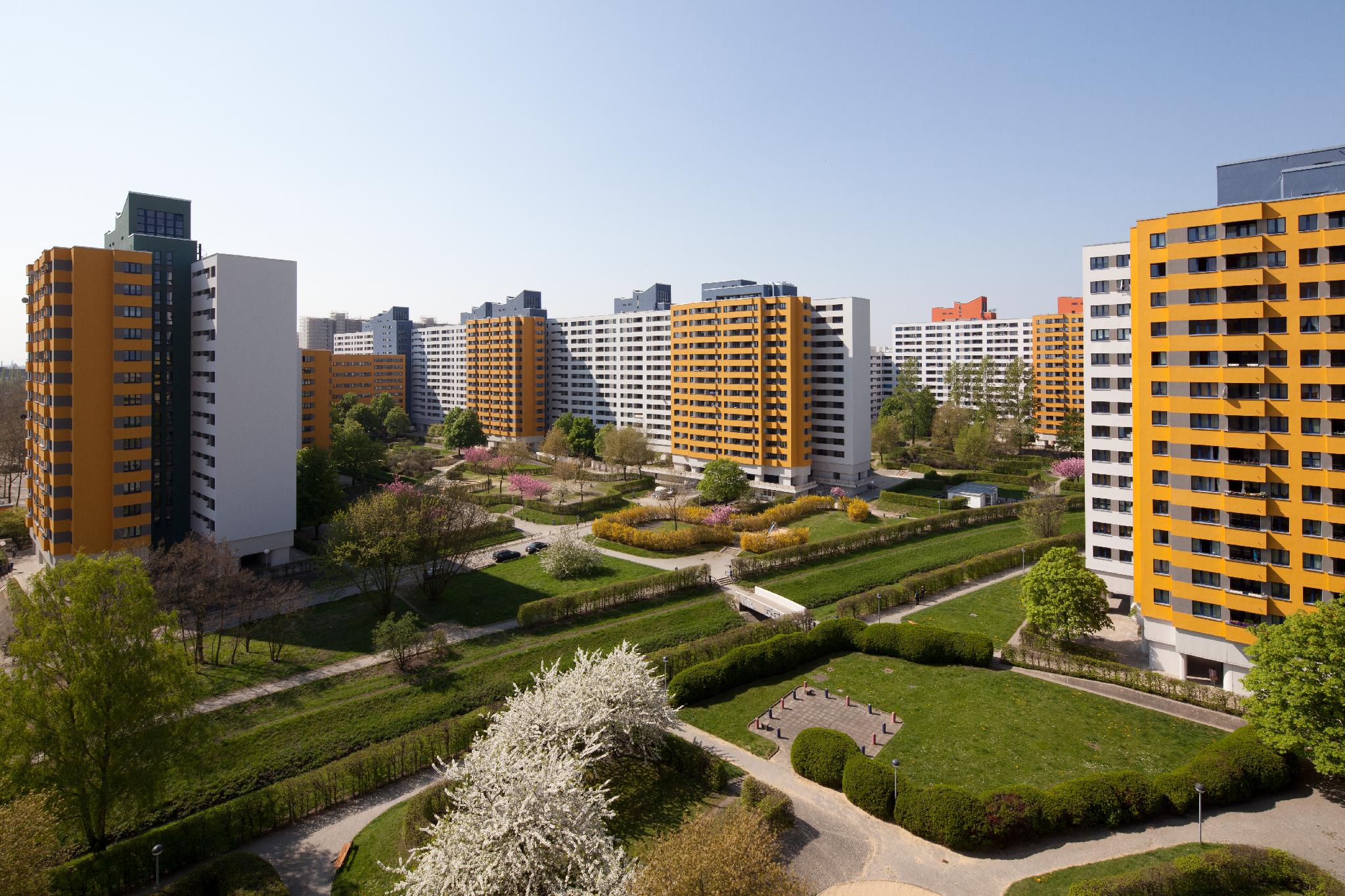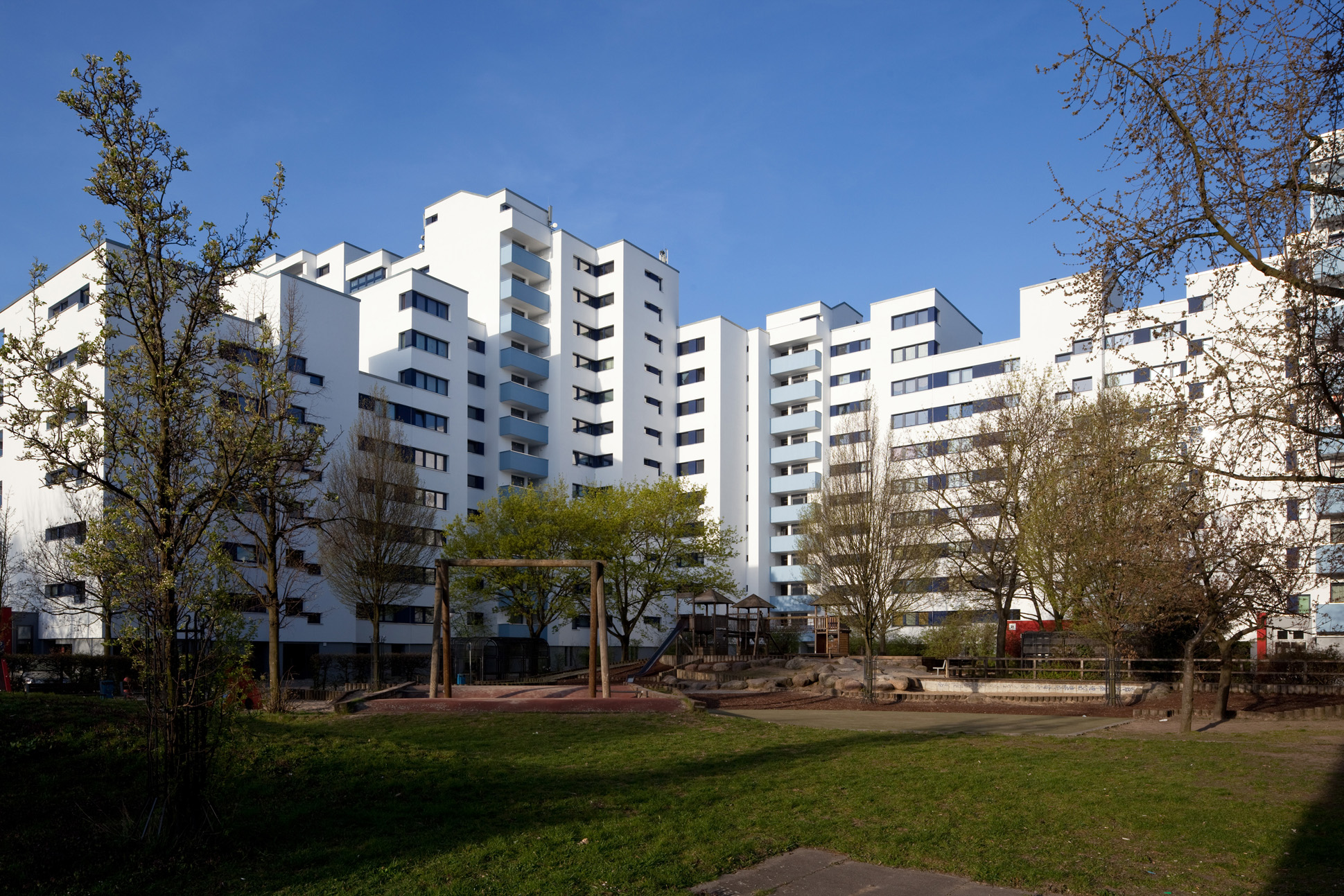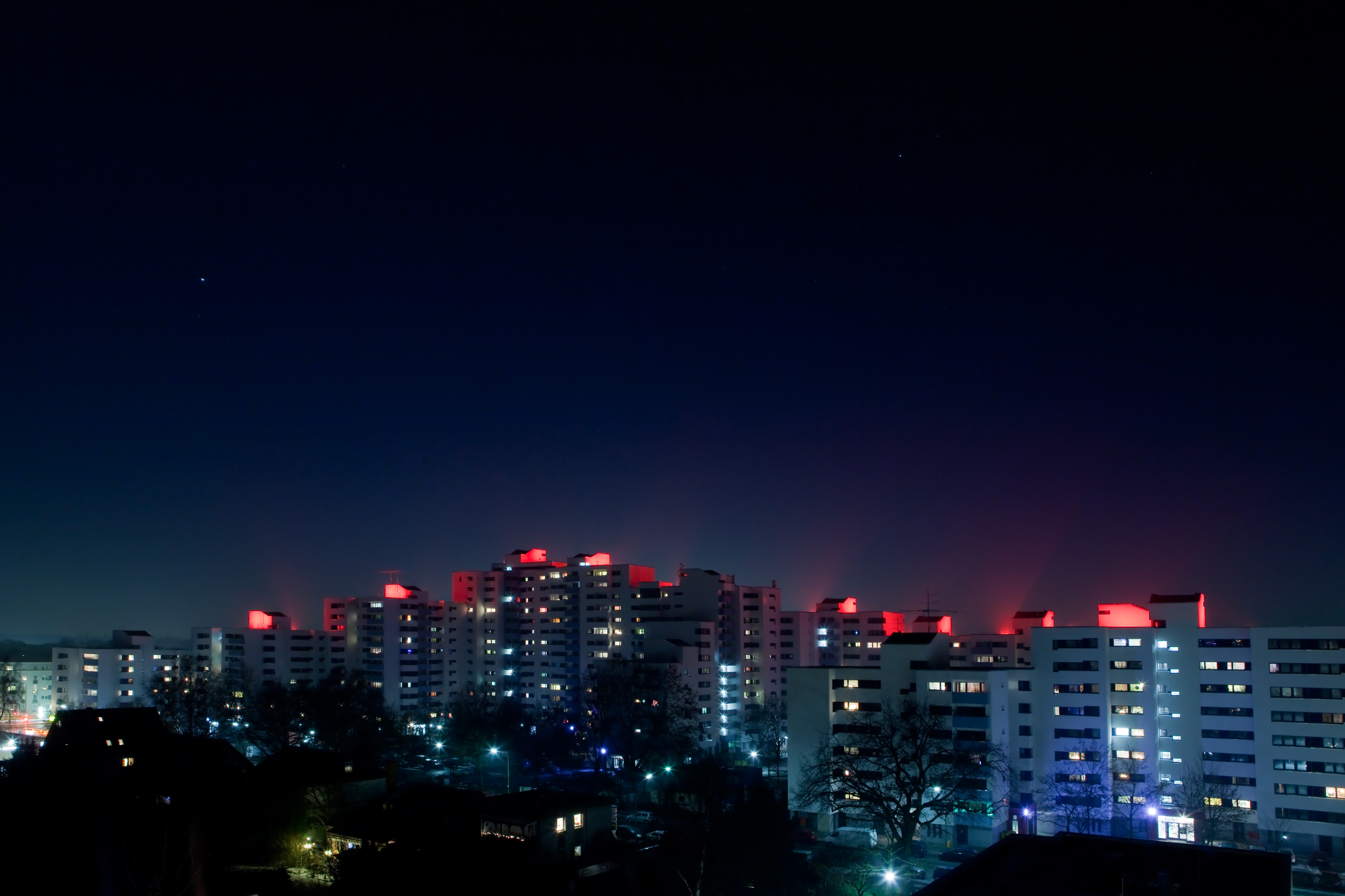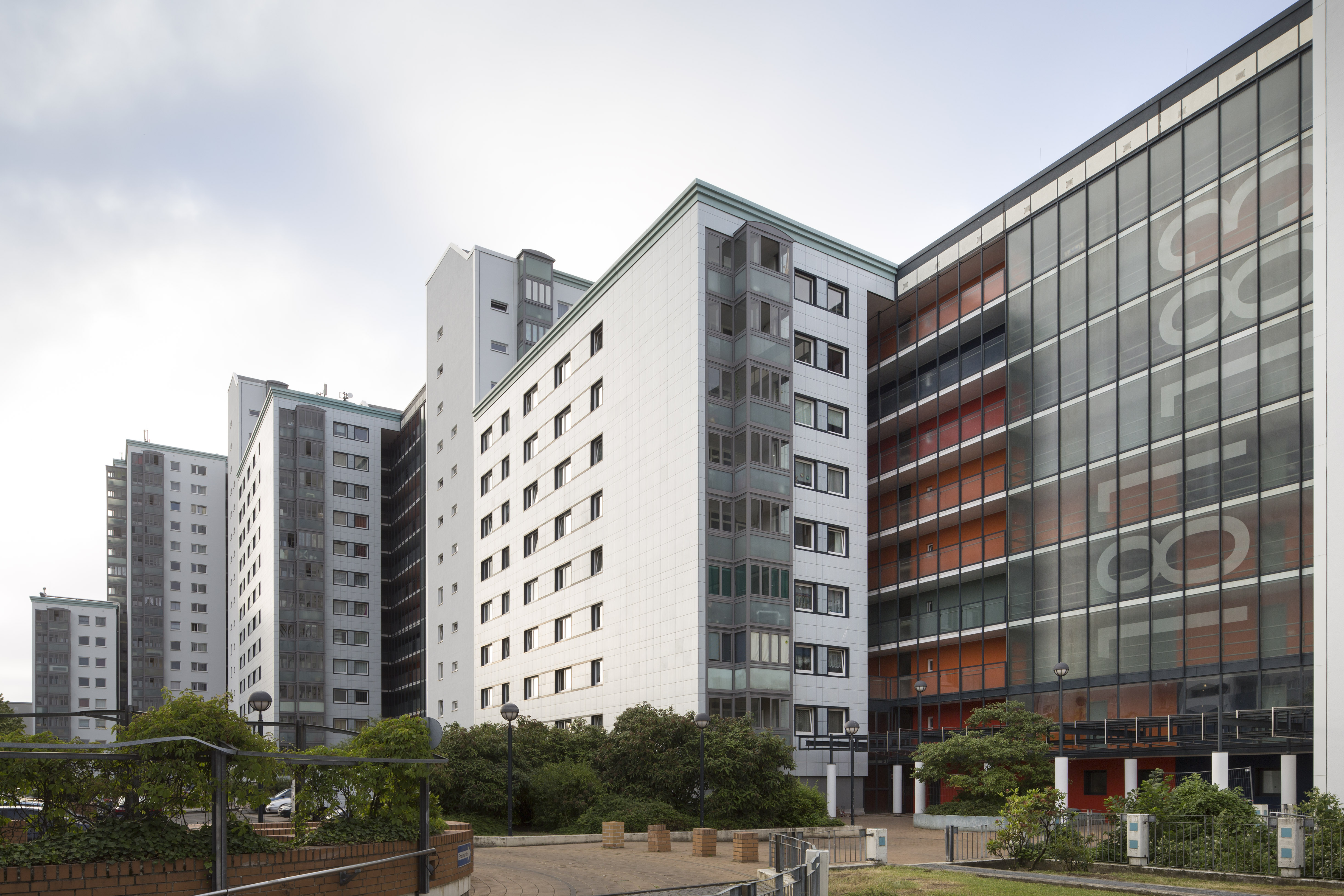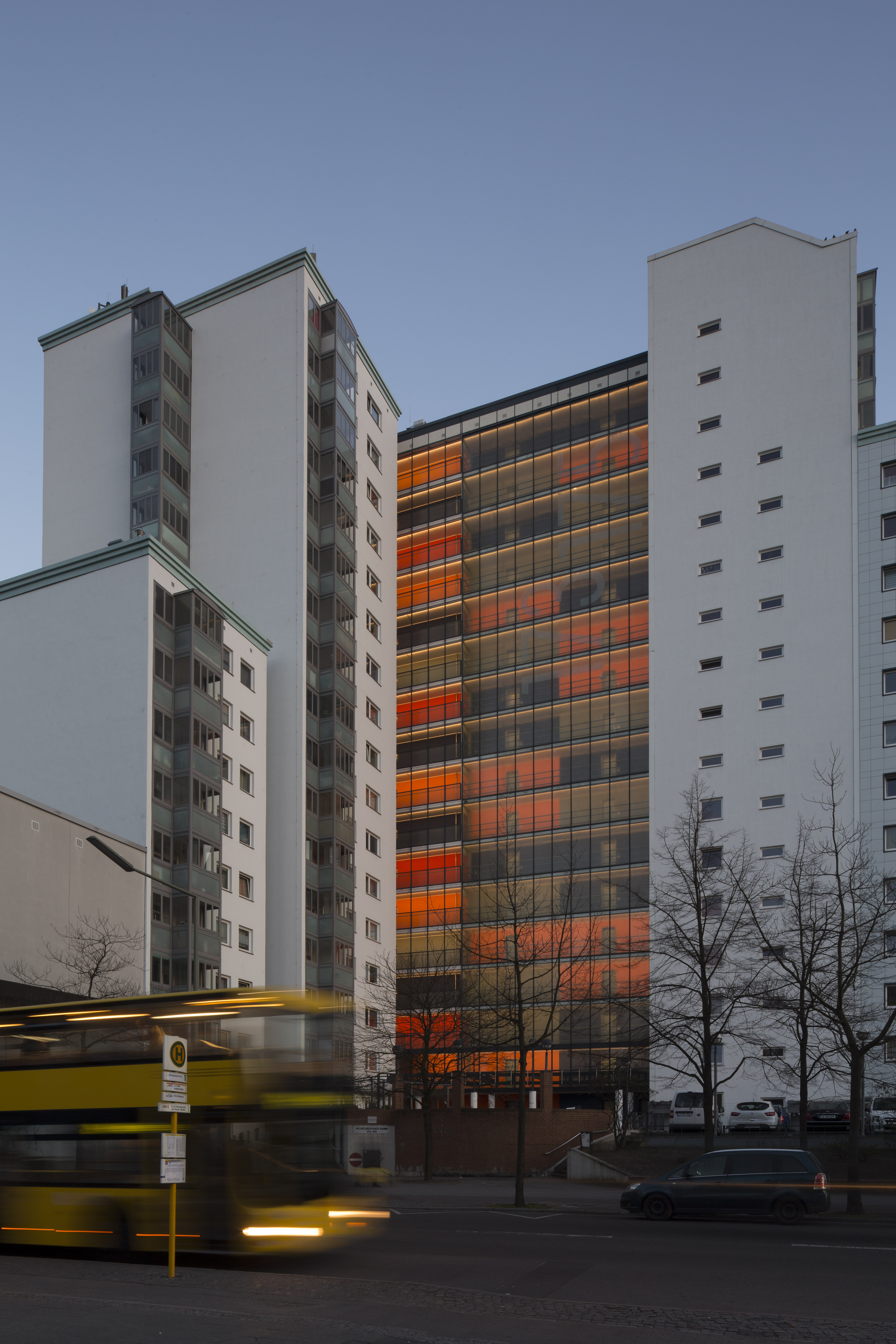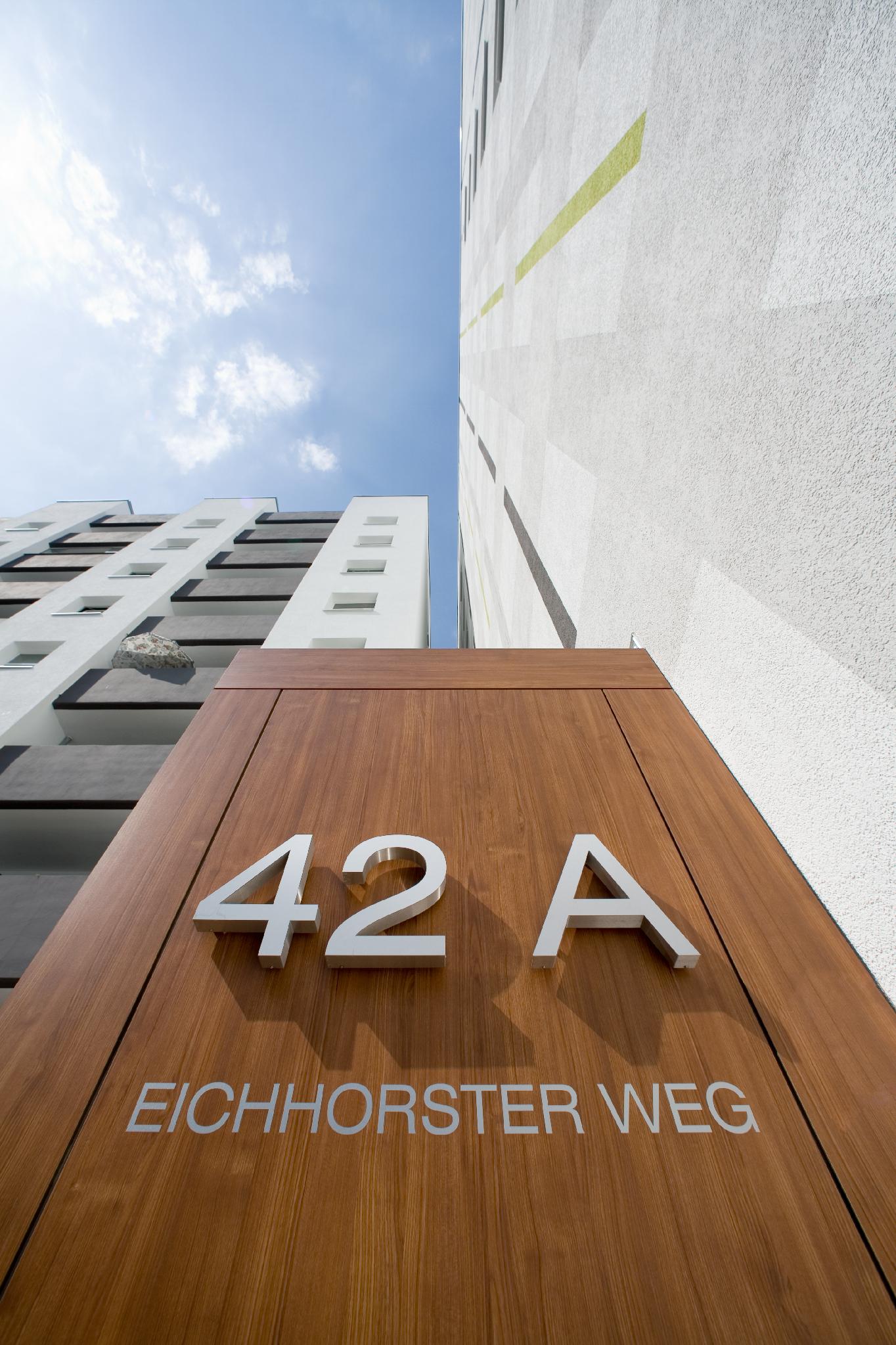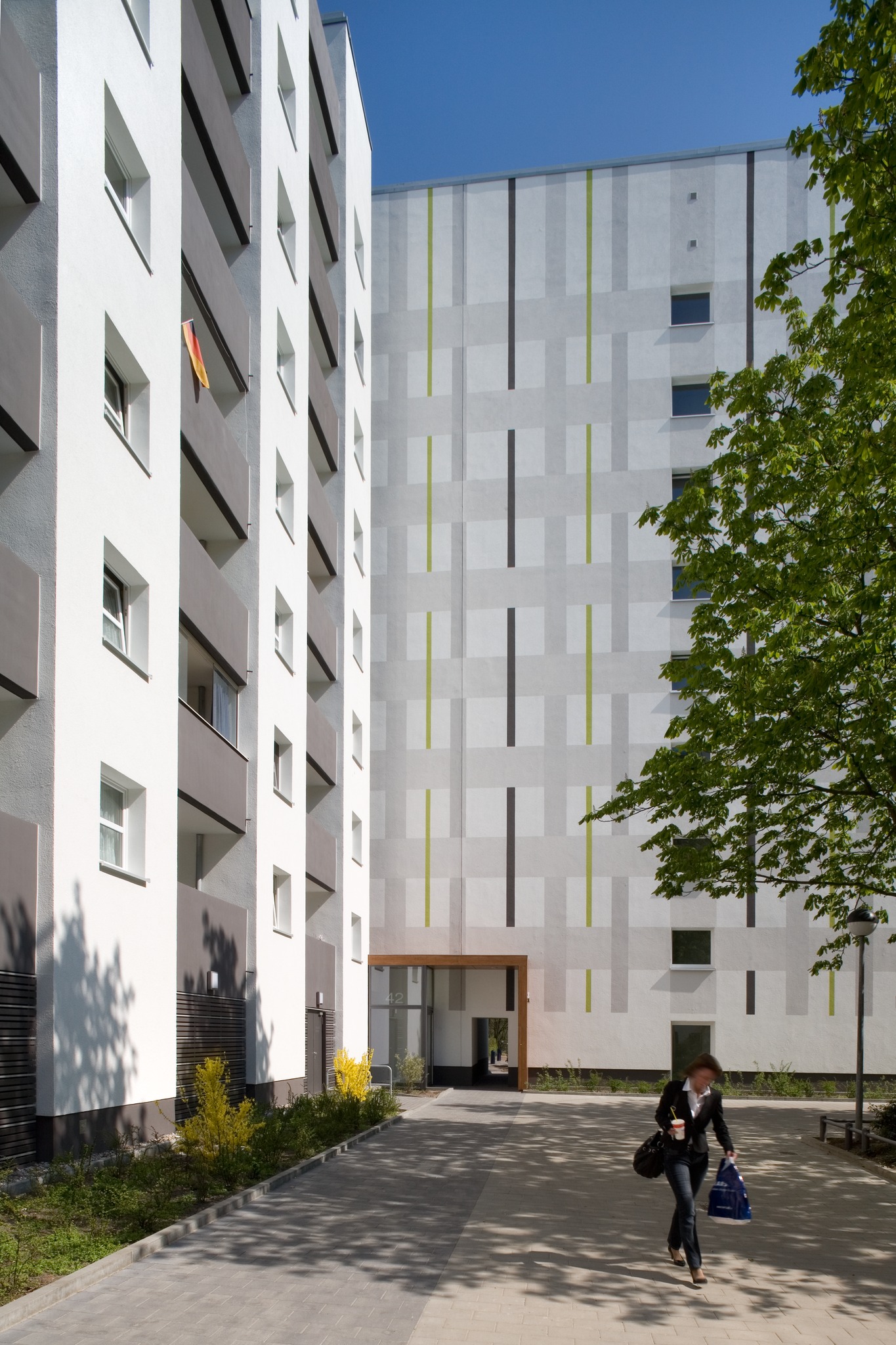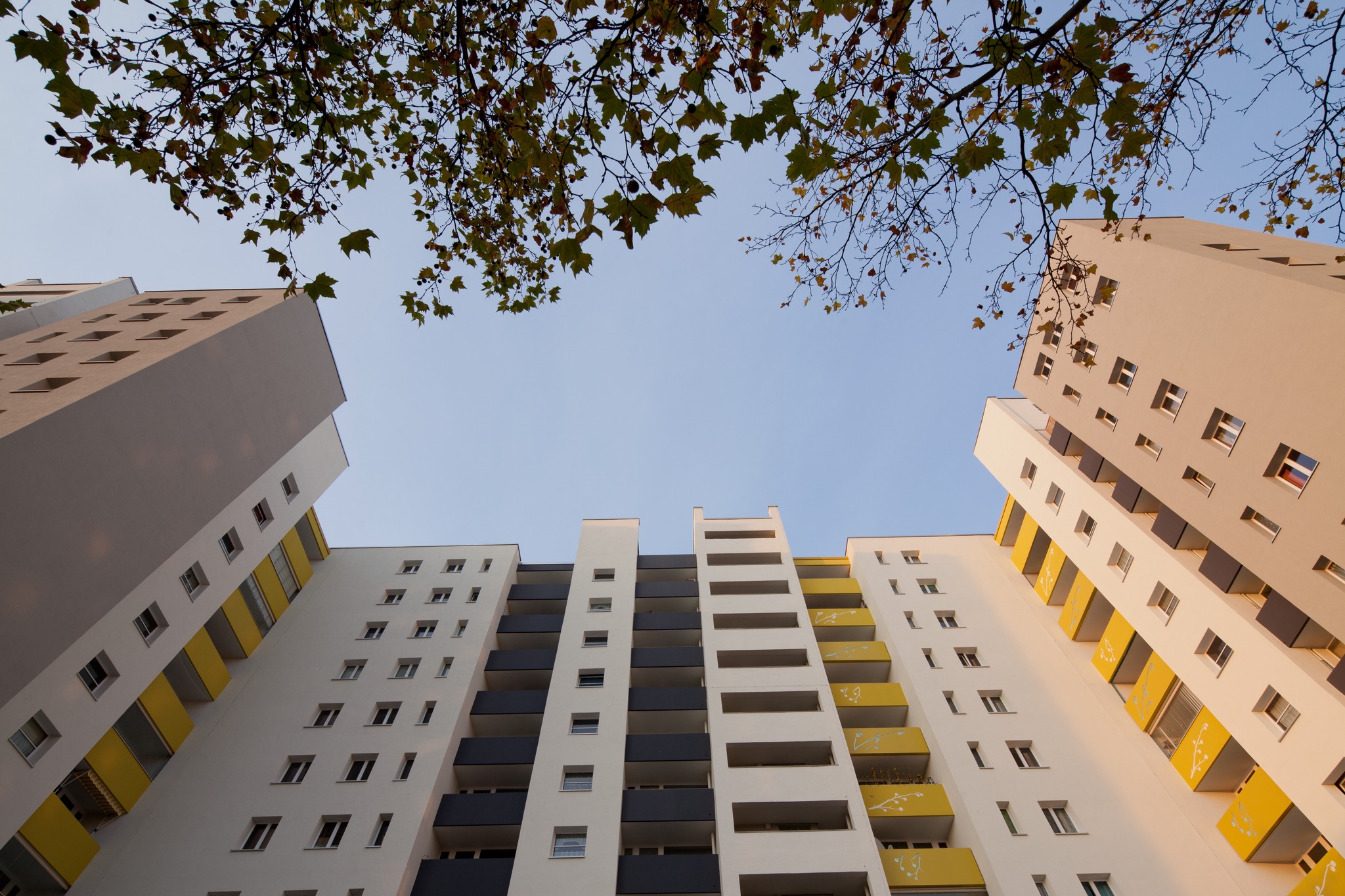City
Berlin
Main actors
City Government, Local Government, National Government, Private Sector, Community / Citizen Group, Public Utility
Project area
Neighborhood or district
Duration
2008 - 2016
The Märkisches Viertel neighbourhood in Berlin has become Germany’s largest low energy settlement due to the energy efficient conversion of 13,500 apartments.
Located in West-Berlin, the Markisches Vietel neighborhood is home to 35,000 people and is characterized by high-rise buildings erected in the 1960s. In 2008, GESOBAU, one of six municipal housing societies in Berlin, commenced an energy-efficient conversion of more than 13,500 apartments at Märkisches Viertel. The apartments are equipped with modern facilities and the building envelope adapted to current energy standards. Design concepts contain new bright entrance areas and expensive garbage disposers have been replaced with an environmental-friendly selective sorting system.
Simultaneously, the Märkisches Viertel was included under the national program “Urban Restructuring in West Germany” and received additional funding for the modernization of social infrastructure amenities and public spaces. In addition, residents had the opportunity to participate through various channels during the conversion process.
An important component in the refurbishment of the buildings was to find a balance between social, ecological and economic requirements including rents remaining at an affordable level for residents. In 2016, the CO2 emissions in Märkisches Viertel had achieved a reduction of 75% and rent levels remained virtually unchanged.
External links / documents
On Map
The Map will be displayed after accepting cookie policy
